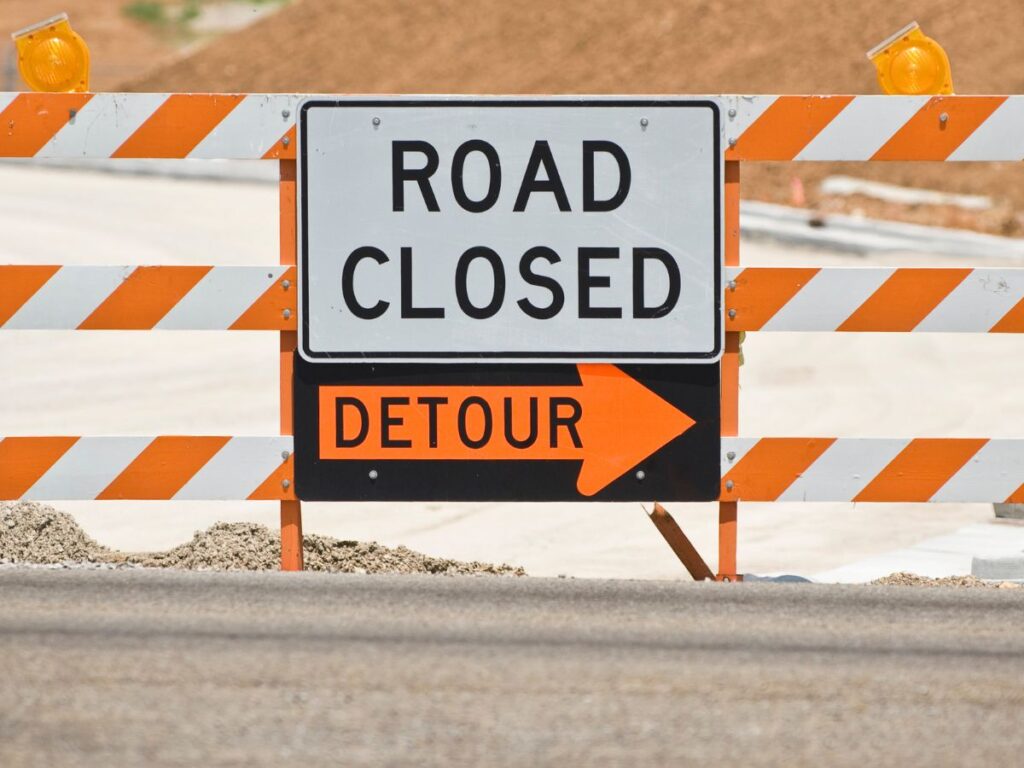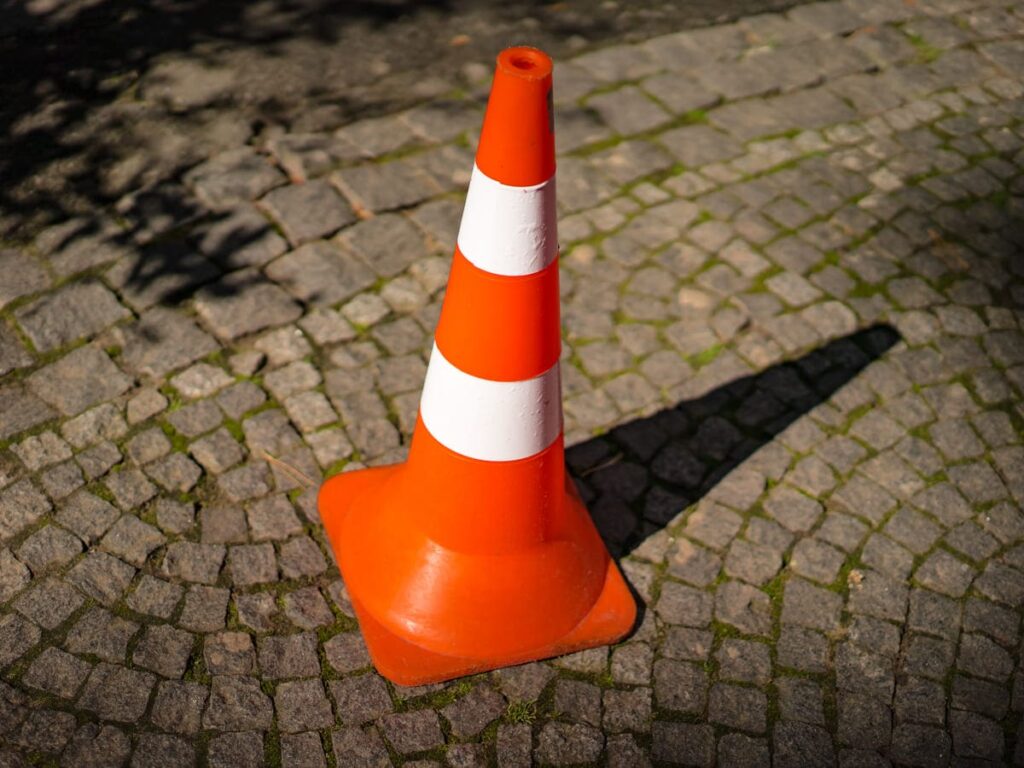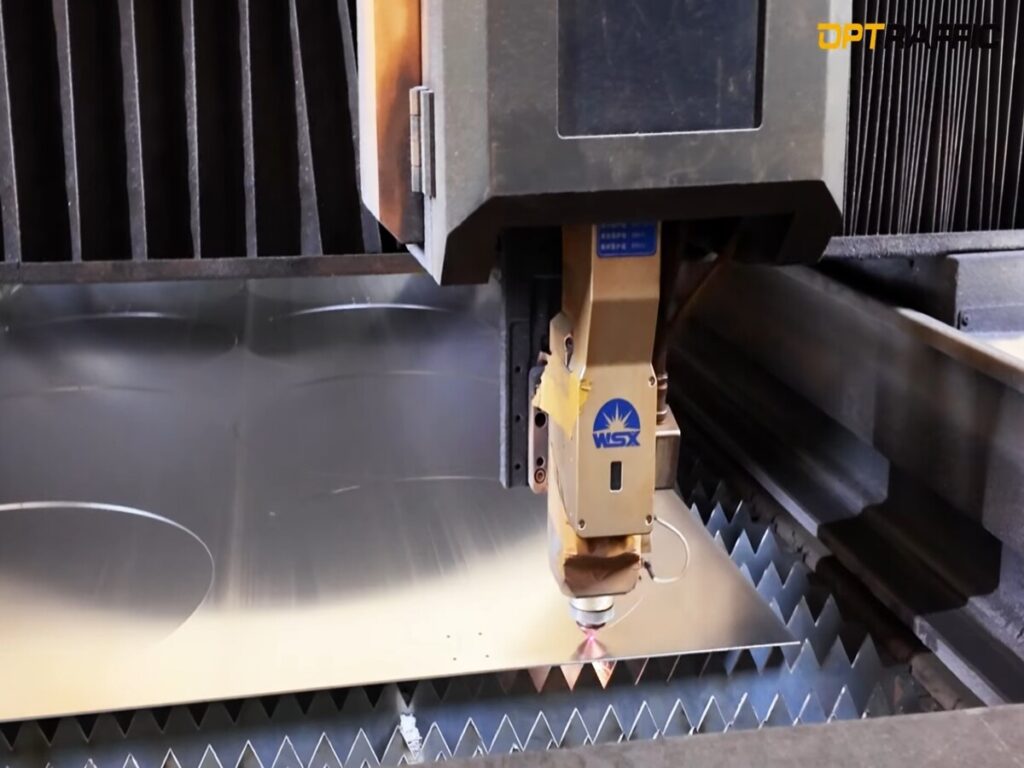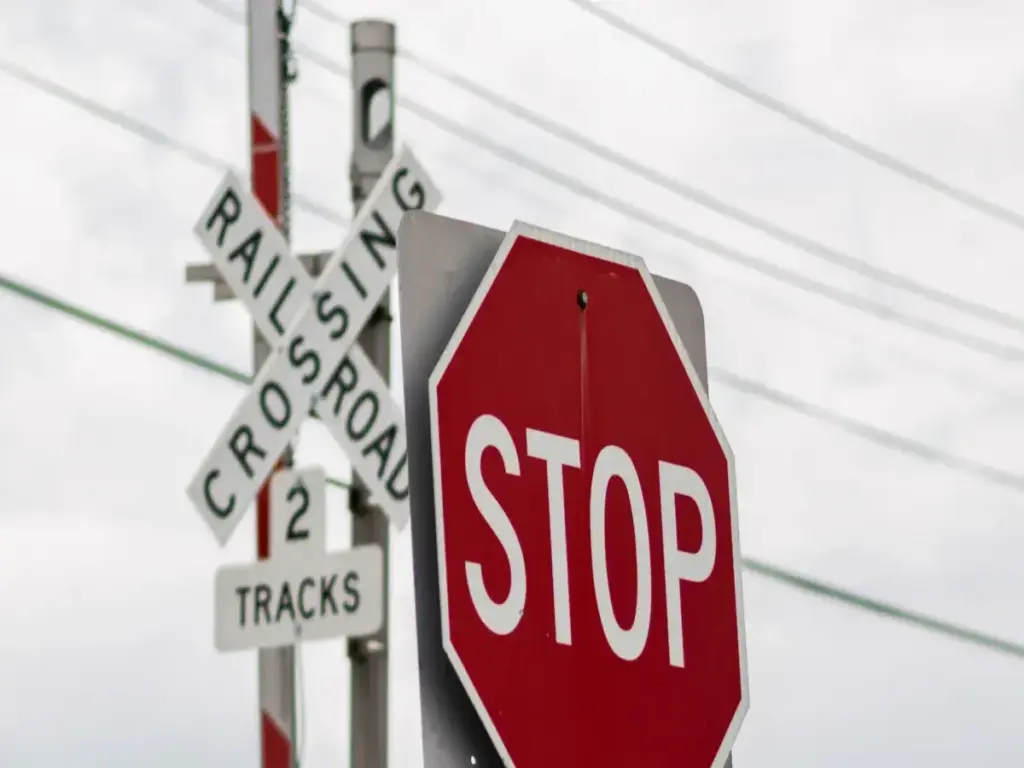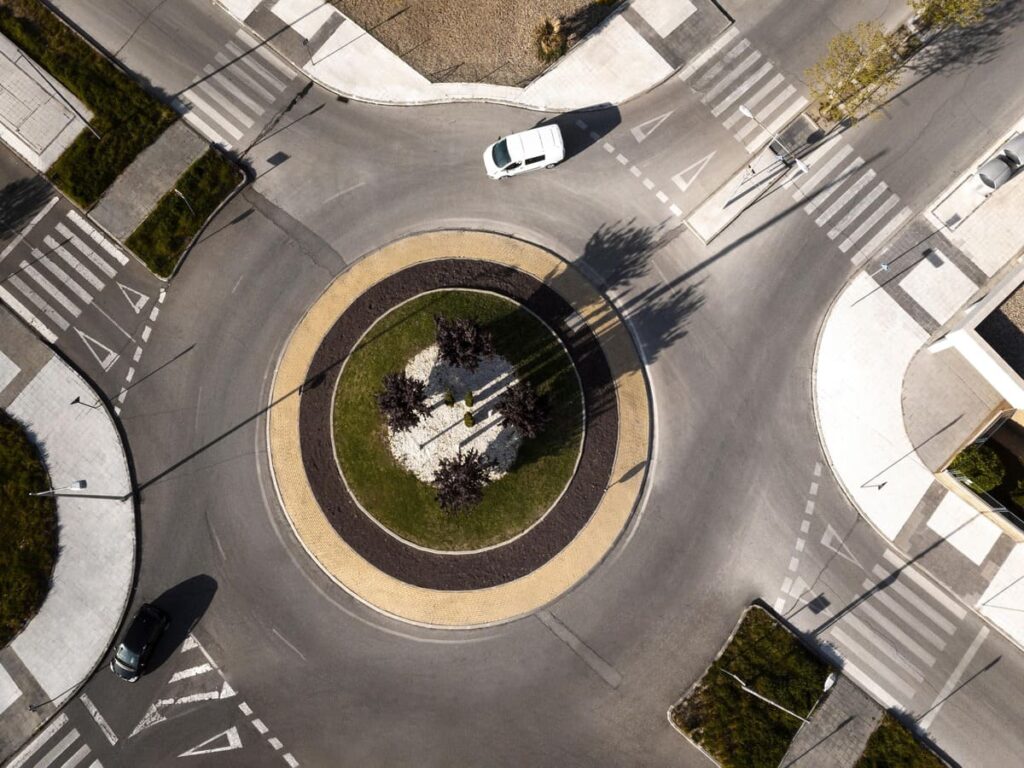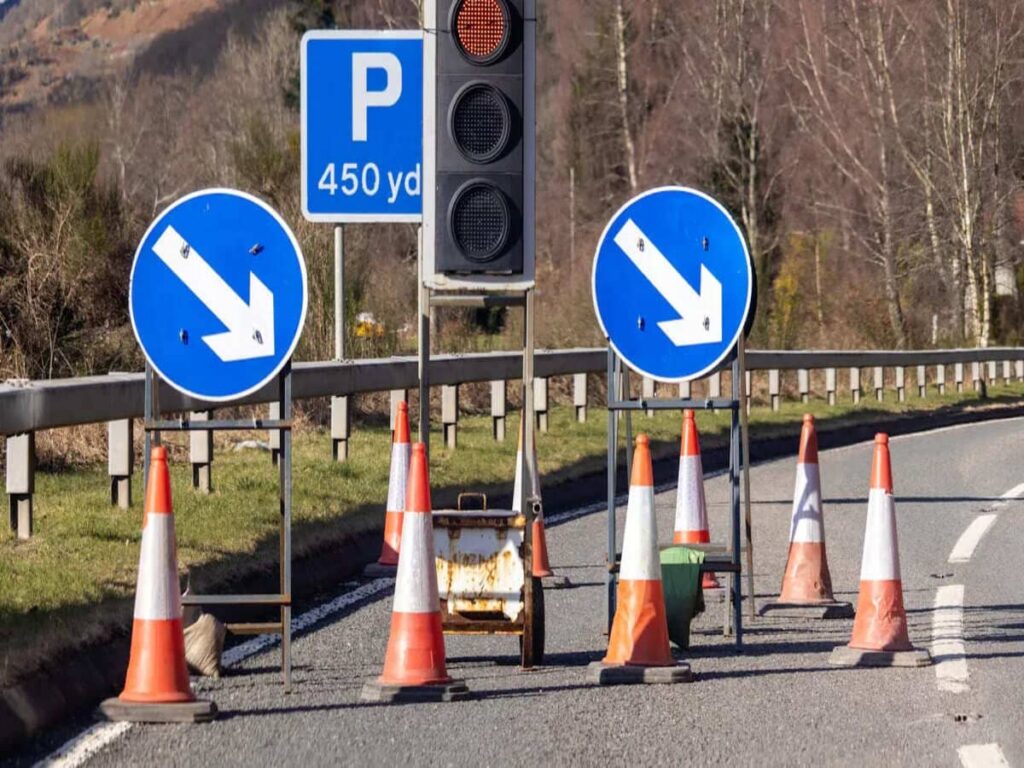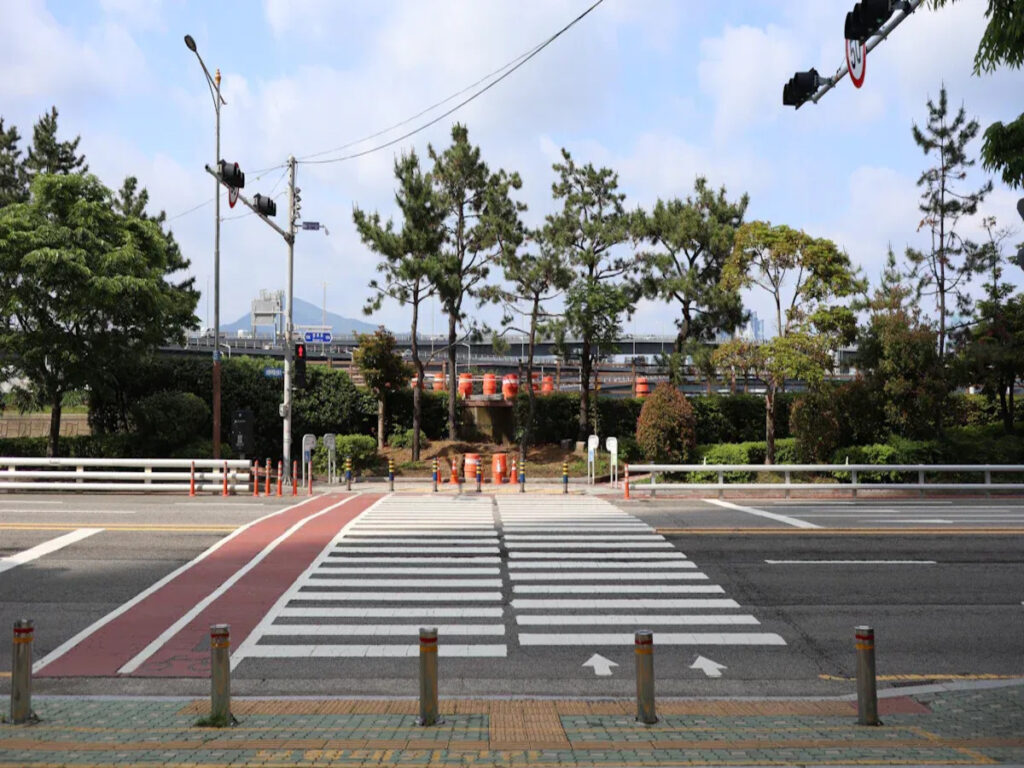
Les pass-piés doivent être faciles à voir pour les conducteurs. Les passages pour piétons clairs et les panneaux de circulation des piétons aident les conducteurs à réagir plus rapidement et à éviter les accidents. Des milliers de piétons meurent dans les accidents de la circulation chaque année. Récemment, 7,342 Les piétons sont morts, maquillage 17% de décès de circulation. Meilleure visibilité des passages pour piétons, amélioré par des panneaux de circulation piétonnes efficaces, peut réduire considérablement ces chiffres. Les passages passéscées brillants peuvent réduire les blessures par 40%. Bon éclairage aux intersections, combiné avec des panneaux de circulation piétonnes bien placés, peut réduire les accidents en 42%. Améliorer la façon dont les panneaux de circulation des piétons sont fabriqués et placés rendent les rues plus sûres pour tous.
OPTRAFIC continue de se concentrer sur la sécurité des piétons en soutenant Clear, Des solutions de signalisation à haute visibilité qui s'alignent sur les besoins de trafic moderne. Alors que les villes investissent dans des passages pour piétons plus intelligents et l'amélioration du placement des signes, Nous nous engageons à offrir des produits qui aident à créer des rues plus sûres pour tout le monde.
Principaux à retenir
- Rendre les passages pour piétons plus faciles à voir avec des lumières vives et des matériaux brillants. Cela aide les accidents inférieurs, surtout la nuit.
- Utilisez des signes plus gros avec des couleurs audacieuses et des lettres claires. Cela les rend plus faciles à lire et à repérer les conducteurs.
- Vérifiez et corrigez souvent les panneaux pour les faire fonctionner bien. Cela évite également les réparations coûteuses plus tard.
- Ajouter des outils intelligents comme des lumières LED et des boutons pour les marcheurs. Ceux-ci rendent le passage plus sûr et le trafic plus fluide.
- Placer les panneaux à différents endroits, comme sur les poteaux et au-dessus des routes. Cela aide tout le monde à les voir et à garder les gens en sécurité.
Facteurs clés affectant la visibilité des passages pour piétons
Conditions d'éclairage: Jour VS. visibilité nocturne
L'éclairage est très important pour voir clairement les passages pour piétons. Pendant la journée, Les conducteurs peuvent voir des passages pour piétons de plus loin. La nuit, C'est plus difficile à voir, Et les accidents se produisent plus souvent. Les décès par piétons la nuit sont trois fois plus élevés que pendant la journée. À propos 76% de morts pour piétons se produisent la nuit. L'ajout d'un bon éclairage peut réduire beaucoup les blessures et les numéros de crash inférieurs.
Conseil: Utilisez des lumières vives aux passages pour piétons et aux intersections pour aider les conducteurs à voir les piétons. Les quartiers ont également besoin d'un bon éclairage, surtout la nuit.
| Condition | Effet sur la sécurité des piétons |
|---|---|
| Nuit | Les décès par piétons sont 3 fois plus élevé que pendant la journée, maquillage 76% des décès. |
| Meilleur éclairage | Réduit de moitié les blessures des piétons et réduit les taux d'accident nocturne. |
Défis météorologiques: Pluie, brouillard, Et la neige
Mauvais temps comme la pluie, brouillard, ou la neige rend les passages pour piétons plus difficiles à voir. La pluie et la neige peuvent cacher des panneaux de vitesse radar, Et le brouillard rend les panneaux de sécurité de la circulation presque invisibles. Cela rend les conducteurs moins susceptibles de respecter les règles et d'augmenter les risques d'accident. L'utilisation de lumières plus lumineuses ou de LED clignotantes peut aider à résoudre ces problèmes.
- La pluie légère ne ralentit pas beaucoup la circulation.
- Les fortes pluies diminuent l'espace routier de 14 à 15%.
- La neige légère a peu d'effet, Mais la neige lourde réduit l'espace routier par 30%.
Note: Utilisez des matériaux solides et des lumières plus lumineuses pour les panneaux piétonnes dans des endroits avec mauvais temps.
Obstructions: Arbres, poteaux, et d'autres obstacles
Des choses comme les arbres, poteaux, ou les barrières peuvent bloquer les passages pour piétons et signes. La recherche montre que les accidents des arbres sont pires dans les zones rurales que dans les villes. La nuit, Un mauvais éclairage et des obstructions rendent les accidents plus probables. Les poteaux et les objets fixes augmentent également les blessures mortelles dans les accidents de tout-terrain.
- Les accidents des arbres dans les zones rurales sont pires que dans les villes.
- Les arbres et les poteaux soulèvent les chances de blessures mortelles dans les accidents.
- Un mauvais éclairage et des obstructions la nuit rendent les accidents plus probables.
Conseil: Vérifiez souvent les passages pour piétons pour les choses qui bloquent la vue et déplacez les panneaux pour les rendre plus faciles à voir.
Optimisation de conception pour les panneaux de trafic piétonniers
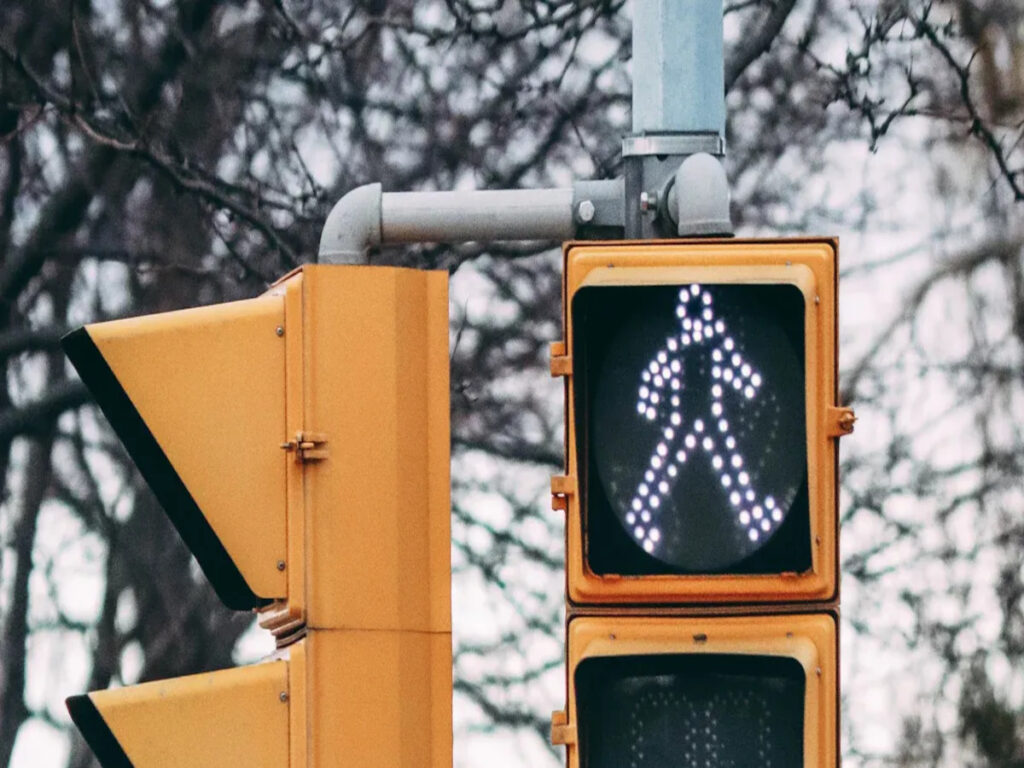
Taille et forme pour une visibilité maximale
La taille et la forme de panneaux de trafic piétons sont très importants. Les signes plus importants sont plus faciles à remarquer pour les conducteurs. Cela est particulièrement vrai dans les zones avec des arbres ou des bâtiments qui distraient l'œil. Les formes rectangulaires et en diamant sont populaires car elles se démarquent bien. La perception d'un signe perceptible dépend de son arrière-plan. Par exemple, Un panneau de circulation devant une forêt verte a un indice de visibilité de plus de 42 °. Mais le même signe devant un mur jaune occupé tombe à 13,6 °.
| Condition | Indice de visibilité (°) |
|---|---|
| Connectez-vous devant la forêt verte | >42 |
| Connectez-vous devant le mur jaune occupé | 13.6 |
| Panneau de gauche avec des objets noirs | 17.3 |
| Panneau droit avec des objets rouges et noirs | 6.5 |
| Stimuli et (pas de masque) | 17.8 |
| Stimuli b (masque noir uni) | 31.9 |
Conseil: Utilisez des signes plus gros avec des formes simples pour les rendre plus faciles à voir, Surtout dans les zones animées.
Couleurs à haut contraste et matériaux réfléchissants
Les couleurs vives et les matériaux réfléchissants font panneaux de trafic piétons plus facile à voir. Les couleurs comme le jaune fluorescent attirent rapidement l'attention. Matériaux réfléchissants, comme une feuille de qualité diamant, Les panneaux d'aide brillent la nuit en reflétant les phares de voiture. La recherche montre que certaines conceptions, comme les barres de ligne d'arrêt avec des symboles, peut réduire les conflits jusqu'à 80%.
| Étude | Résultats |
|---|---|
| Houten (1998) | Les conflits ont chuté de presque 80% avec des signes spéciaux et des lignes d'arrêt. |
| Abdulsattar et al. (1996) | Les conflits de tournée à gauche sont tombés 20-65%, Contrôlement de droite par 15-30%. |
| Huybers et al. (2004) | Moins de conflits et une meilleure distance de rendement avec les signes symboliques. |
| Correction et al. (1996) | Plus de piétons ont vérifié pour tourner les voitures avec des invites. |
| Turner et al. (2006) | Les appareils rouges ont conduit à des taux de conformité plus élevés. |
Note: Utiliser Bright, couleurs fluorescentes et matériaux réfléchissants pour rendre les panneaux visibles jour et nuit.
Polices lisibles et messagerie claire
Les polices claires et les messages simples sont essentiels pour panneaux de trafic piétons. Audacieux, Les polices faciles à lire aident les conducteurs à comprendre rapidement les panneaux, Même de loin. Des études montrent que les polices bollantes de Clearview améliorent la distance de lecture nocturne jusqu'à jusqu'à 16%. Cela donne aux conducteurs plus de temps pour réagir. Cependant, Les alphabets standard fonctionnaient parfois mieux, montrant que les matériaux réfléchissants comptent également pour la lisibilité.
| Description de l'étude | Résultats |
|---|---|
| Étude TTI comparant la série d'alphabet clearview-bold et standard(modifié) | Clearview a amélioré la lisibilité la nuit mais n'a pas toujours été meilleur. |
| Fhwa Étude sur Clearview vs. Alphabets standard | La recherche a montré des différences mais avait des limites à la comparaison des polices. |
| Études PTI sur Clearview-Bold | La distance de lecture nocturne s'est améliorée de 16%, Donner plus de temps aux conducteurs. |
| Résultats sur les alphabets standard | Des résultats surprenants ont montré des distances de lisibilité plus longues dans certains cas. Les matériaux réfléchissants ont joué un grand rôle. |
Conseil: Cueillir audacieux, polices simples et garder les messages courts pour aider les conducteurs à lire les panneaux plus rapidement.
Placement et orientation des panneaux de trafic piétonniers
Meilleure hauteur et angle pour une visibilité claire
La hauteur et l'angle de panneaux de trafic piétons sont très importants. Les panneaux au niveau des yeux sont plus faciles à voir et à lire les conducteurs. Les études montrent que la meilleure taille de lettre et l'angle dépendent des conditions routières. Par exemple, sur des routes à 2 voies avec un 30 Limite de vitesse MPH, 8-Les lettres de pouces fonctionnent bien. Sur des routes à 4 voies avec un 55 Limite de vitesse MPH, 15-Les lettres de pouces sont meilleures pour la visibilité.
Les panneaux doivent affronter les conducteurs directement pour une lecture facile. Si les signes sont inclinés entre 20 ° et 40 ° de droite, Ils deviennent plus difficiles à lire. Des lettres plus grandes peuvent aider lorsque les panneaux sont placés haut ou parallèles à la route.
| Condition de trafic | Meilleure hauteur de lettre | Effet d'angle |
|---|---|---|
| 2-routes de voie, 30 mph | 8 dans. | La lecture devient plus difficile à des angles de 20 ° à 40 ° |
| 2-routes de voie, 55 mph | 12 dans. | Les panneaux sont plus clairs lorsqu'ils sont confrontés directement aux conducteurs |
| 4-routes de voie, 30 mph | 10 dans. | Des lettres plus grandes aident si les signes sont parallèles |
| 4-routes de voie, 55 mph | 15 dans. | Des lettres plus grandes améliorent la visibilité au-dessus ou en dessous du niveau des yeux |
Conseil: Placer les panneaux au niveau des yeux et directement pour les rendre plus faciles à voir.
Placement intelligent: Bord de la route, dans la rue, et au-dessus
Où tu mets panneaux de trafic piétons est tout aussi important que leur conception. Les panneaux en bordure de route fonctionnent bien dans les zones avec des trottoirs ou des épaules larges. Ce sont super pour les quartiers et les routes plus lentes. Signes dans la rue, placé sur la route, Attirez l'attention dans les zones animées. Ils sont particulièrement utiles près des écoles et des intersections surpeuplées.
Les panneaux aériens sont les meilleurs pour la circulation intense ou les routes multi-voies. Les conducteurs peuvent les repérer même si les panneaux en bordure de route sont bloqués par des voitures ou des objets. Utilisation d'un mélange de routes, dans la rue, Et les panneaux aériens aident à couvrir toutes les zones et à garder les conducteurs alertes.
Note: Combiner le bord de la route, dans la rue, et des panneaux aériens pour répondre à différents besoins de trafic et améliorer la visibilité.
Réduire l'encombrement et garder les vues claires
Trop de panneaux de sécurité de la circulation à un seul endroit peuvent confondre les conducteurs et une sécurité inférieure. L'encombrement rend plus difficile de se concentrer sur panneaux de trafic piétons. Des panneaux d'avertissement brillants et des signaux bien chronométrés aident à réduire la confusion et à améliorer la sécurité.
Obstacles comme les arbres, poteaux, ou les buissons peuvent bloquer les signes et les rendre moins efficaces. Le nettoyage de ces obstacles améliore la visibilité et réduit les risques d'écrasement. La recherche montre que de meilleures lignes de vision peuvent couper des accidents mortels par 56% et une blessure s'écrase par 37%.
| Preuve | Détails |
|---|---|
| Signes clairs | Des panneaux d'avertissement brillants aident les conducteurs à mieux remarquer. |
| Bon timing du signal | Les signaux devraient donner aux piétons suffisamment de temps pour traverser en toute sécurité. |
| Moins d'encombrement | Moins de signes réduisent la confusion et améliorent la sécurité. |
Conseil: Vérifiez les passages pour piétons souvent pour les panneaux bloqués et en supprimez des autres pour garder les vues claires.
Amélioration des cadres de signes pour la durabilité et la visibilité
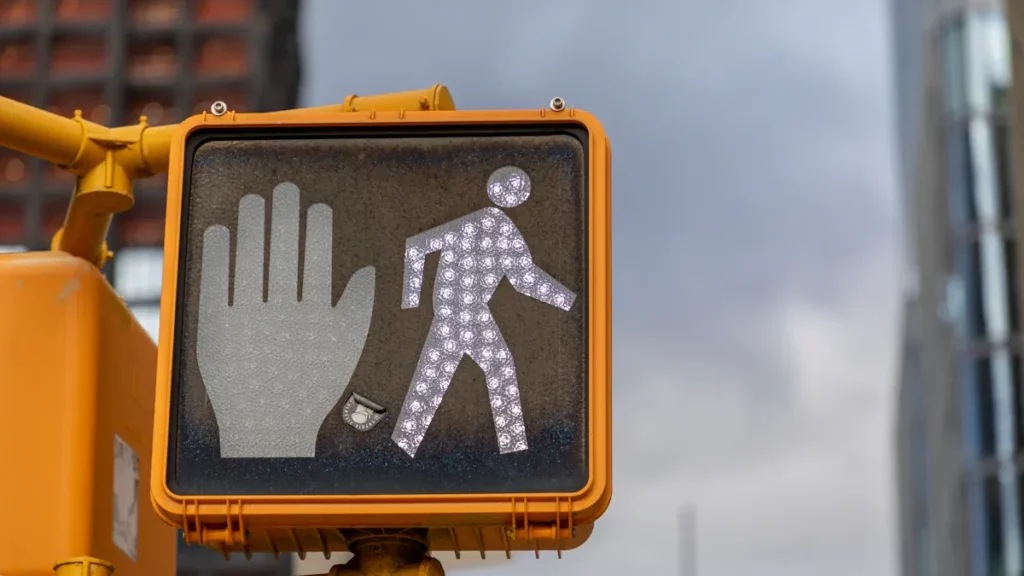
Matériaux forts: Aluminium vs. acier
Choisir le bon matériau aide les panneaux à durer plus longtemps. L'aluminium et l'acier sont des choix courants. L'aluminium ne rouille pas facilement, Même dans des endroits humides ou salés. Une étude a testé les deux matériaux en 53 Spots sur huit ans. L'aluminium est resté plus fort que l'acier par temps difficile. L'acier fonctionne bien dans les zones sèches si elle est correctement enduite.
Vous voulez une comparaison plus profonde pour aider à choisir le bon matériau pour votre environnement? Lisez notre guide complet: Aluminium vs. Cadres d'acier pour les panneaux de route pour explorer la durabilité, coût, et des idées de maintenance pour les deux options.
Panneaux extérieurs, comme panneaux de trafic piétons, Besoin de matériaux résistants aux intempéries. L'aluminium et le PVC sont super parce qu'ils ne rouillent pas ou ne s'usent pas rapidement. Pour des signes durables, L'acrylique et le métal sont de bonnes options. Les matériaux de haute qualité coûtent plus cher au début, mais économisez de l'argent plus tard en nécessitant moins de réparation ou de remplacement.
Conseil: Utilisez de l'aluminium dans des zones humides ou salées. L'acier fonctionne dans des endroits secs avec des revêtements.
Revêtements anti-glare pour les jours ensoleillés
La lumière du soleil brillant peut rendre les signes difficiles à lire. Les revêtements anti-glare corrigent ceci en réduisant les réflexions. Ces revêtements se répandent uniformément, rendre les signes plus faciles à voir. Les conducteurs peuvent lire clairement les panneaux, Même lorsque le soleil brille directement sur eux.
Revêtements anti-glare sont particulièrement utiles pour panneaux de trafic piétons Près des routes très fréquentées. Ils aident les conducteurs à remarquer rapidement les panneaux sans être distraits par l'éblouissement. Cette petite mise à niveau améliore la sécurité et réduit les risques d'accident.
Note: Choisissez toujours des revêtements anti-glare pour les panneaux dans les zones ensoleillées.
Garder les signes en bonne forme
Les soins réguliers gardent les cadres de panneaux forts et visibles. Vérifier la rouille, fissure, ou endommager souvent. Les cadres en aluminium ont besoin de moins de soins car ils résistent naturellement à la rouille. Les cadres en acier ont besoin de plus d'attention, comme repeindre ou recycler, Pour éviter la rouille.
Les contrôles saisonniers sont également importants. Après les tempêtes, pluie, ou neige, Inspecter les panneaux de dommages. Remplacez rapidement les pièces cassées pour que les signes fonctionnent bien. L'entretien régulier fait durer les panneaux plus longtemps et économise de l'argent au fil du temps.
Conseil: Planifiez des chèques réguliers et résolvez rapidement les problèmes pour éviter de gros coûts.
Intégration technologique pour les panneaux de trafic piétonniers
Éclairage LED pour la visibilité nocturne
Voir clairement la nuit est la clé pour la sécurité. Ajout de lumières LED à panneaux de trafic piétons les rend plus faciles à voir dans l'obscurité. Ces lumières aident les conducteurs à remarquer des panneaux et des personnes plus rapidement, réduire les risques d'accident. Les panneaux avec les lumières fonctionnent mieux que ceux sans, rendre les messages plus clairs. La nuit, Les décès par piétons sont trois fois plus élevés que pendant la journée. À propos 76% De ces morts se produisent après la tombée de la nuit. Un bon éclairage aux passages à niveau peut réduire les accidents nocturnes jusqu'à 38% et une blessure s'écrase par 42%.
Les lumières LED facilitent également les signes à lire. Par exemple, Le panneau Legendviz® utilise des lettres LED-Lit, Doublage à quelle distance les conducteurs peuvent le lire. Cela donne aux conducteurs plus de temps pour réagir, surtout dans le mauvais temps ou les zones sombres.
| Statistique | Valeur |
|---|---|
| Taux de mortalité nocturne par rapport à la journée | 3 fois plus haut |
| Pourcentage de décès des piétons la nuit | 76% |
| Réduction des accidents nocturnes aux intersections | 33-38% |
| Réduction des accidents de la blessure des piétons avec un éclairage adéquat | 42% |
Conseil: Ajouter des lumières LED à panneaux de trafic piétons pour améliorer la visibilité et la sécurité la nuit.
Panneaux d'énergie solaire pour l'efficacité énergétique
À l'énergie solaire panneaux de trafic piétons Économisez de l'énergie et du travail sans électricité. Ces panneaux restent sur même pendant les pannes de courant, les rendre fiables. Des villes comme la consommation d'énergie coupée de Seattle par 75% avec des feux de stopage solaires. Chaque lumière solaire empêche également 1 à 2 tonnes de Émissions de CO2 annuel, Aider l'environnement et garder un nettoyant à l'air.
Les signes solaires réduisent également la pollution lumineuse, Rendre les routes plus sûres pour tout le monde. Les systèmes de trafic réguliers coûtent environ $8,800 Plus de cinq ans, Mais les solaires ne coûtent que $4,800. Ils ont également besoin de moins d'entretien, Économiser encore plus d'argent.
Note: Les panneaux à énergie solaire sont économiques et fiables, Parfait pour les zones avec des coûts énergétiques élevés ou des pannes de courant.
Capteurs intelligents et signaux activés par les piétons
Les capteurs et signaux intelligents rendent les passages pour piétons plus sûrs. Ces systèmes sentent lorsque les gens traversent et activent automatiquement les signaux. Imagerie thermique infrarouge (Et -man) détecte les gens par leur chaleur corporelle, Même dans le brouillard ou la faible lumière. UV - Les lampes frontales améliorent à quel point les conducteurs peuvent voir la nuit 200% par rapport aux phares réguliers.
Les signaux activés par les piétons réduisent également les temps d'attente et maintiennent le trafic en douceur. Ils fonctionnent bien près des écoles, rues animées, Et des endroits avec beaucoup de marcheurs. L'utilisation de la technologie intelligente rend les passages pour piétons plus sûrs et le trafic est meilleur pour tout le monde.
Conseil: Utilisez des capteurs intelligents et des signaux activés par les piétons pour stimuler la sécurité et améliorer le flux de trafic.
Sélection des matériaux & Niveaux de rétroréflexité
Prismatique de haute intensité vs. Feuille de qualité diamant
Choisir le bon matériau réfléchissant aide les signes à se démarquer mieux. Feuilles prismatiques de haute intensité reflète la lumière plus que les matériaux ordinaires. Sa conception spéciale rend les signes plus faciles à voir dans les zones de trafic chargées. Les conducteurs peuvent réagir plus rapidement car ces signes sont plus clairs dans un éclairage différent.
- Feuilles prismatiques de haute intensité répond aux règles Mutcd pour la visibilité.
- Il aide les conducteurs à voir les signes plus rapidement dans une lumière brillante ou faible.
- L'installer correctement le maintient bien fonctionner pendant longtemps.
Feuille de qualité diamant reflète encore plus de lumière que les feuilles prismatiques. Il fonctionne mieux dans des endroits sombres ou sur les routes rapides. Les deux matériaux améliorent la visibilité, Mais le choix dépend des besoins de la région.
Conseil: Utilisez des feuilles prismatiques pour la plupart des endroits et des diamants pour les spots nécessitant une visibilité supplémentaire.
Grades de réflectivité pour urbain vs. zones de banlieue
Les besoins réfléchissants changent entre les villes et les banlieues. Les villes ont plus de lumières, Les signes n'ont donc pas besoin de réflectivité super élevée. Banlieues et zones rurales, avec moins de lampadaire, Besoin de matériaux qui fonctionnent bien dans l'obscurité.
- Des études montrent que les signes de la ville, Comme en Caroline du Sud, Percer mieux que les ruraux dans le Connecticut.
- Les intersections à trois sont plus sûres que celles à quatre voies dans les deux villes et les banlieues.
- Se concentrer sur les routes et les intersections plus petites améliorent la sécurité.
Les règles de réflectivité actuelles peuvent ne pas résoudre complètement les problèmes de sécurité. La recherche suggère de meilleures façons de mesurer comment la réflectivité affecte les taux de crash.
Note: Pensez à l'éclairage et au trafic de la région lors du choix des niveaux de réflectivité pour les signes.
Jour VS. Considérations de visibilité nocturne
Voir les panneaux de sécurité de la circulation change beaucoup de jour et de nuit. Pendant la journée, La lumière du soleil aide les conducteurs à repérer les panneaux de plus loin. La nuit, Moins de lumière rend la réflectivité très importante pour la sécurité.
La conduite nocturne a deux à quatre fois plus de décès que la conduite d'une journée. Même sans accidents liés à l'alcool, Les décès nocturnes restent beaucoup plus élevés.
Meilleurs matériaux, comme Feuille de qualité diamant, Améliorer la visibilité nocturne. Ces matériaux reflètent bien les phares de voiture, Aider les conducteurs à voir les signes plus tôt.
Les études montrent que les conducteurs peuvent voir des panneaux plus loin pendant la journée que la nuit. Cela prouve que les matériaux réfléchissants de haute qualité sont essentiels pour la conduite nocturne plus sûre.
Conseil: Utilisez des matériaux réfléchissants pour la sécurité nocturne, surtout dans les zones plus sombres.
Études de cas sur l'optimisation des panneaux de trafic piéton
Ville A: PLAQUES DE BATES et signes fluorescents réduisant les accidents
City A a eu de nombreux accidents nocturnes impliquant des piétons. Les conducteurs ne pouvaient pas bien voir les passages pour piétons dans les zones sombres. Pour résoudre ceci, La ville a ajouté des plaques arrière à panneaux de trafic piétons. Ces plaques arrière ont fait ressortir les panneaux davantage en créant un contraste clair avec l'arrière-plan. La ville est également passée à des panneaux fluorescents jaunes-vert, qui sont plus faciles à remarquer le jour et la nuit.
Les changements ont très bien fonctionné. Les accidents nocturnes sont tombés 35% dans un an. Les chauffeurs ont dit qu'ils pourraient voir les passages pour piétons plus tôt, leur donner plus de temps pour s'arrêter. L'utilisation de plaques arrière et de panneaux lumineux était un moyen intelligent et abordable de rendre les rues plus sûres.
Conseil: Utilisez des plaques arrière et des panneaux fluorescents pour améliorer la visibilité dans les zones avec un mauvais éclairage.
Zone scolaire: Balises clignotantes au-dessus et panneaux interchangeables
Une zone scolaire dans une autre ville a eu des problèmes de vitesse pendant les heures d'école. Les autorités ont ajouté des balises clignotantes au-dessus panneaux de trafic piétons. Ces balises se sont allumées à des moments occupés pour avertir les conducteurs de ralentir. Des panneaux interchangeables ont montré des messages comme “Zone scolaire” ou “Lent lors du clignotement,” Selon l'heure de la journée.
Ce système a beaucoup aidé. La vitesse a chuté de 50%, Et les conducteurs ont accordé plus d'attention aux enfants traversant la rue. Les parents et les enseignants ont dit que la région était beaucoup plus sûre. Des balises clignotantes et des panneaux modifiables ont montré comment la technologie peut résoudre des problèmes spécifiques.
Note: Les balises clignotantes au-dessus sont idéales pour les zones animées, Surtout près des écoles, Pour assurer la sécurité des piétons.
Entretien & Gestion des actifs des panneaux de trafic piétons
Contrôles réguliers pour l'état des signes
La vérification des panneaux les maintient souvent en sécurité et utile. Recherchez des problèmes comme les couleurs délavées, cadres rouillés, ou boulons lâches. Réparer ces premiers les empêche de devenir dangereux. Les travailleurs formés peuvent trouver des problèmes et s'assurer que les panneaux fonctionnent bien.
| Étapes de maintenance clés | Ce qu'ils font |
|---|---|
| Inspections et réparations | Gardez les signes de travail et tachez les problèmes tôt. |
| Chèques de qualité | Assurez-vous que les panneaux restent fiables et sûrs. |
| Travailleurs qualifiés | Améliorer la sécurité en résolvant rapidement les problèmes. |
La météo et le temps peuvent épuiser les panneaux de circulation. Les contrôles réguliers aident à résoudre ces problèmes tôt, Garder les routes plus sûres pour tout le monde.
Conseil: Vérifiez régulièrement les panneaux pour résoudre de petits problèmes et les faire durer plus longtemps.
Inspections liées aux conditions météorologiques
Le mauvais temps peut nuire aux panneaux de circulation. Pluie, neige, ou des vents forts peuvent endommager les cadres ou les parties réfléchissantes. Vérifier les panneaux de signalisation après les tempêtes aide à trouver et à résoudre ces problèmes rapidement.
Chercher la rouille, fissure, ou des morceaux manquants après un temps dur. Remplacez les pièces cassées pour garder les signes clairs et solides. Dans les zones avec des ouragans ou de la neige lourde, Concentrez-vous sur la sécurisation des cadres et le maintien des matériaux réfléchissants en bon état.
Note: Les contrôles météorologiques empêchent les petits problèmes de se transformer en gros, réparations coûteuses.
Mise à niveau des panneaux avant d'échouer
Le remplacement des anciens panneaux avant de briser garde les routes plus sûres. Nouveaux matériaux, comme des tôles de qualité diamant ou des revêtements anti-glare, rendre les signes plus faciles à voir.
Passer à des cadres plus forts, comme l'aluminium ou l'acier, aide les signes durer plus longtemps. L'ajout de lumières LED ou d'énergie solaire rend les signes plus visibles et éconergétiques.
Conseil: Mettre à niveau les panneaux tôt pour économiser de l'argent et améliorer la sécurité.
Intégration des panneaux de trafic piétons avec d'autres améliorations de la visibilité
Marquages de la chaussée thermoplastique
Les marques thermoplastiques facilitent les passages pour piétons. Ces marques sont chauffées et collent fermement aux routes, Rester fort avec le temps. Contrairement à la peinture ordinaire, Ils ne s'usent pas rapidement de la circulation ou du mauvais temps. Même dans les zones enneigées avec des charrues, Ils restent visibles pendant des périodes plus longues.
Bien que les marques thermoplastiques coûtent plus cher au début, Ils économisent de l'argent plus tard. Ils ont besoin de moins de réparations et de remplacements par rapport aux lignes peintes. Cela en fait un excellent choix pour les routes et les intersections occupées.
| Fonctionnalité | Marques thermoplastiques | Peinture régulière |
|---|---|---|
| Force | Haut | Faible |
| Besoins de réparation | Moins | Plus |
| Coût de départ | Plus haut | Inférieur |
| Durée de vie | Plus long | Plus court |
| Résistance à neige | Modéré (En cas de recoins) | Faible |
| Utilisation du budget | Partie du coût du projet | Coût de maintenance supplémentaire |
Conseil: Choisissez des marques thermoplastiques pour les routes animées ou les zones météorologiques dures pour économiser des réparations et améliorer la visibilité.
Îles de refuge pour piétons et signes dans la rue
Les îles du refuge donnent aux piétons un endroit sûr lors de la traversée de rues larges. Ces zones surélevées au milieu de la route permettent aux gens de s'arrêter avant de traverser la voie suivante. L'ajout de panneaux dans la rue près de ces îles aide les conducteurs à remarquer les piétons et à s'arrêter pour eux.
Ces îles fonctionnent bien dans des endroits animés ou à proximité des écoles. Ils rendent la traversée plus courte et plus sûre pour les piétons. Des panneaux dans la rue près des îles attirent l'attention des conducteurs, réduire les chances d'accidents.
Note: Utilisez des îles Refuges avec des panneaux dans la rue pour rendre les passages à niveau plus sûrs et plus faciles à voir.
Part de piétons surélevés avec des extensions de trottoir
Les passages pour piétons surélevés aident à ralentir les voitures et à faire ressortir les piétons. Ces passages sont plus élevés que la route, Agir comme des ralentisseurs pour rendre les conducteurs plus lentement. Les extensions de trottoir rendent le passage plus court et améliorent la visibilité pour tout le monde.
Mettre les passages pour piétons surélevés près des parcs ou des écoles rend la zone plus sûre. Les conducteurs remarquent la surface surélevée et ralentissent, tandis que les piétons sont plus faciles à voir. Les extensions de trottoir arrêtent également les voitures garées de bloquer les vues, Garder les lignes de vue claires.
Conseil: Mélanger les passages pour piétons surélevés avec des extensions de trottoir pour réduire la vitesse et améliorer la sécurité des piétons.
Faire mieux les panneaux de trafic et les cadres piétons aide à garder les gens en sécurité. Designs simples, placement intelligent, matériaux forts, et la nouvelle technologie facilite les signes et les accidents réduits. La vérification et la mise à jour des panneaux les font souvent bien fonctionner. Par exemple, le «manuel des piétons’ listes 18 façons d'améliorer la sécurité, comme ajouter des signaux ou ralentir le trafic. Les études IRAP montrent 80% des routes avec des marcheurs n'ont pas de bons trottoirs, montrant le besoin de mises à niveau. Rapports comme “Stratégies de contrôle du signal de la circulation pour les piétons et les cyclistes” Donnez des conseils et des règles pour rendre les rues plus sûres. L'utilisation de ces idées peut aider à créer des routes plus sûres pour tout le monde.
| Type de preuve | Description |
|---|---|
| Interventions éprouvées | Le «manuel des piétons’ listes 18 façons d'améliorer la sécurité des piétons. |
| Approche du système sûr | La construction de routes pour gérer les erreurs a rendu les rues plus sûres. |
| enquêtes IRAP | Trouvé 80% des routes avec des marcheurs manquent de bons trottoirs, Besoin de mises à jour. |
| Titre | But | Domaines de concentration |
|---|---|---|
| Stratégies de contrôle du signal de la circulation pour les piétons et les cyclistes | Offre des conseils, outils, et les règles pour les agences | Rendre les intersections plus sûres pour les marcheurs et les motards |
FAQ
1. Pourquoi les signes fluorescents jaunes-vert sont-ils utilisés pour les passages pour piétons?
Les signes fluorescents jaunes-vert sont très brillants et perceptibles. Leur couleur se démarque le jour et la nuit. Des études montrent que ces panneaux de sécurité aident les conducteurs à voir des accidents de piétons meilleurs et abaissés. Ils travaillent bien dans des zones occupées ou mal éclairées.
Conseil: Placer les panneaux fluorescents près des écoles et des intersections bondées pour une meilleure sécurité.
2. Comment les revêtements anti-glare aident-ils à la visibilité des signes?
Les revêtements anti-glare empêchent le soleil de réfléchir sur les signes. Cela les rend plus faciles à lire les jours ensoleillés. Le revêtement se propage uniformément, Ainsi, les conducteurs peuvent voir le message clairement sans distractions.
Note: Utilisez des revêtements anti-glare pour les panneaux en brillant, endroits ensoleillés.
3. Pourquoi l'éclairage LED est-il utile pour les signes piétonnes?
Les lumières LED facilitent les panneaux la nuit. Ils aident les conducteurs à remarquer des signes et des personnes plus rapidement, Abaisser les risques de crash. Les panneaux éclairés par LED sont également plus clairs dans les zones sombres, Donner aux conducteurs plus de temps pour réagir.
| Fonctionnalité | Avantage |
|---|---|
| Sécurité nocturne | Moins d'accidents |
| Lisibilité | Plus facile à voir |
4. Les signes piétons à énergie solaire valent-ils le coût?
Les panneaux à énergie solaire économisent de l'argent et de l'énergie. Ils travaillent même lorsque le pouvoir est sorti et réduit la pollution du CO2. Les villes utilisant des panneaux solaires signalent de grandes économies par rapport aux feux de circulation réguliers.
Conseil: Utilisez des panneaux d'énergie solaire dans des zones à forte coût énergétique ou à des pannes de courant.
5. Comment les passages pour piétons surélevés rendent la marche plus sûre?
Les passages pour piétons surélevés ralentissent les voitures et rendent les marcheurs plus faciles à voir. Leur hauteur fonctionne comme un ralentissement, Rendre les conducteurs plus lentement. Lorsqu'il est associé à des extensions de trottoir, Ils raccourcissent les distances de traversée et améliorent la visibilité.
Note: Ajouter des passages pour piétons surélevés près des parcs et des écoles pour les passages plus sûrs.

